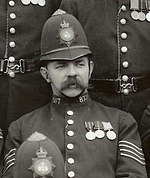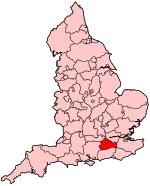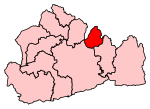Epsom railway station
1859 establishments in EnglandDfT Category C1 stationsEpsomFormer London and South Western Railway stationsLondon stations without latest usage statistics 1415 ... and 9 more
London stations without latest usage statistics 1516London stations without latest usage statistics 1617Rail transport stations in London fare zone 9Railway stations in Great Britain opened in 1859Railway stations in SurreyRailway stations served by Govia Thameslink RailwayRailway stations served by South Western RailwayTransport in Epsom and EwellUse British English from November 2013

Epsom railway station serves the town of Epsom in Surrey, England. It is located off Waterloo Road and is less than two minutes' walk from the town's high street. It is 14 miles 18 chains (22.9 km) down the line from London Waterloo. The Oyster Pay as you go was extended to Epsom on 25 February 2019, allowing Oyster cards and contactless cards to be used.
Excerpt from the Wikipedia article Epsom railway station (License: CC BY-SA 3.0, Authors, Images).Epsom railway station
Station Approach, Epsom and Ewell Woodcote
Geographical coordinates (GPS) Address Nearby Places Show on map
Geographical coordinates (GPS)
| Latitude | Longitude |
|---|---|
| N 51.334 ° | E -0.269 ° |
Address
Station Approach
Station Approach
KT19 8JS Epsom and Ewell, Woodcote
England, United Kingdom
Open on Google Maps









